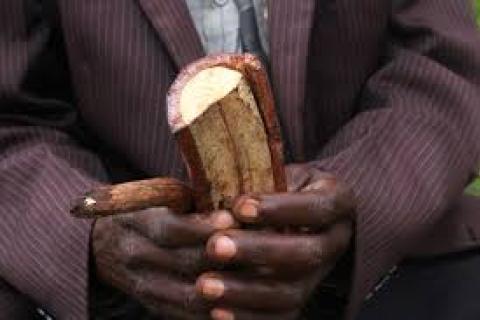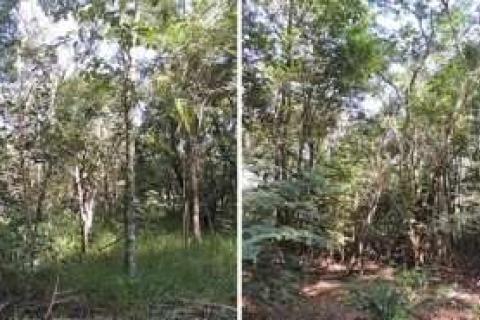Communities look forward to reviving and commercialising private forests in Nepal
Indonesian government says no to reclassifying oil palm estates as forests
- The Indonesian government has rejected a proposal made by a prominent university to reclassify oil palms as a forest crop.
- The proposal was ostensibly meant to resolve the problem of illegal plantations operating inside forest areas, and would have redefined plantations as forests, and new plantings as reforestation.
- The environment ministry says it has no plans to adopt such a plan because it has its own program, the social forestry scheme, to get local communities to switch from illegal oil palm plantations to more sustainable, and profitable,
Farmers regreen Kenya’s drylands with agroforestry and an app
A Quarter of the world’s 4.4 billion hectares (10.9 million acres) of cropland is degraded, often due to drying, according to the UN’s Food and Agriculture Organisation (FAO). Just over a hectare and a half, or 4 acres, of that dried-out land have for years been located at Benedict-
pound) bags of produce from a 0.8-hectare (2-acre) plot, whether the rains are adequate or not.
Uluguru Spice Project changing lives of smallholder spice farmers
SPICE farmers in Ulugulu Mountains are earning windfall profits thanks to a project which has
introduced them to modern agriculture practices and use of hybrid seeds
A recent report by Sustainable Agriculture Tanzania said over 1,500 farmers from the Uluguru Mountains catchment area and 172 model farmers from other regions backed by 31 agriculture extension officers are benefited directly from the Uluguru Spice Project.
New rule puts Indonesia’s protected forests up for grabs for agribusiness
- Indonesia’s environment ministry has issued a new regulation allowing protected forest areas to be cleared for a “food estate” program.
- The program is aimed at boosting domestic crop supplies, but critics say it prioritizes the interests of agribusiness at the expense of small farmers and the environment.
- Indonesia degazetted 26 million hectares (64 million acres) of its forest over the past 20 years, primarily for large-scale agriculture, and today has 29.7 million hectares (73.4 million acres) of protected forest, an area the size of Italy.
Indonesia inches forward on community forest goal, hobbled by pandemic
JAKARTA (Thomson Reuters Foundation) - Indonesia has cut back its planned transfer of state forests to local communities this year by half - an area twice the size of Los Angeles - because of the coronavirus outbreak, according to the Ministry of Environment and Forestry.
Bambang Supriyanto, the ministry’s director general of social forestry and environmental partnership, said social distancing measures from March to June had halted the technical work needed on the ground to certify the handover of land.
A vital mangrove forest hidden in Vietnam’s largest city could be at risk
The Can Gio Mangrove Biosphere Reserve, located in Vietnam’s Ho Chi Minh City, is one of the world’s largest areas of reforested mangroves.
BY MICHAEL TATARSKI ON 21 APRIL 2020
Mongabay Series: Global Forests
Agroforestry: An ancient ‘indigenous technology’ with wide modern appeal (commentary)
- The highly climate- and biodiversity-friendly agricultural practice of agroforestry is now practiced widely around the world, but its roots are deeply indigenous.
- Agroforestry is the practice of growing of trees, shrubs, herbs, and vegetables together in a group mimicking a forest, and its originators were indigenous peoples who realized that growing useful plants together created a system where each species benefited the others.
- Agroforestry is now estimated to cover one billion hectares globally and sequester over 45 gigatons of carbon from the
Intensive silviculture accelerates Atlantic rainforest biodiversity regeneration
An experiment conducted in Brazil in an area of Atlantic Rainforest suggests that intensive silviculture, including the use of herbicide and substantial amounts of fertilizer, is a more effective approach to promoting the regeneration of tropical forest and biomass gain than the traditional method based on manual weeding and less fertilizer.
How to Produce Forest-Friendly Chocolate
Sougue Kadjatou is a 45-year-old farmer who lives with her husband and two children in Agboville, a village in Côte d’Ivoire. Her cocoa plantation, where she works every day from morning until early afternoon, is a forty minute walk from the village. “I’m glad they told me to plant banana and timber trees in my cocoa plantation,” she says. “It’s good to plant various trees. The bananas give me something to eat and sell, whereas the timber is a friend of the cocoa. Gives it shade.











